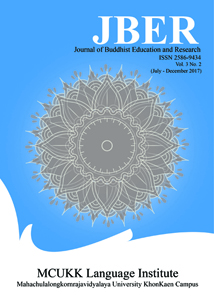Religious Paradigm Shift in the Asean Region during the Age of Coming of Sinhalese Buddhism in the 13th Century
Keywords:
Theravada Buddhism of Lankan lineage, Religious Paradigm Shift, ASEAN regionAbstract
Since the 13th century until now, the introducing of Sinhalese civilization especially Buddhism, had replaced the world-view of the former religions that were Hinduism and Buddhism both Theravada from Asoka period and Mahayana, had contributed to the ancient ASEAN. With the shift of religious paradigm, the ASEAN at that time in particular the Mainland welcomed and adopted the Theravada Sinhalese Buddhism due to 6 conditions:- 1) The fall of older kingdoms and older religions, 2) The rise of new kingdoms and welcoming the new intra-religious movement, 3) The great reforms initiated by the state leaders, 4) The greatness of material’s emphasis placed by the previous kingdoms and religions, 5) An emphasis on simplicity put by the new religious movement, and 6) The enormous reforms of Buddhism in Sri Lanka initiated by The Paramakramapahu I, the Great. Thus, the religious paradigm shift of the Buddhism in this ASEAN mainland took place at the age of introducing of Sinhalese Buddhism and has had great impacts and contributions to the mainland ASEAN region especially in the 13th century onwards.
References
Publication Society.
Ian Harris (2002).History and Practice. Cambodian Buddhism: University of
Hawai’I Press.
Kanai Lal Hazra. (1982). History of Theravada Buddhism in South-East Asia
with special reference to India and Ceylon. New Delhi: Munshiram
Manoharlal.
Karuna Kusalasaya (1995).Buddhism in Thailand - Its Past and its Present
.Kandy: Buddhist Publication Society.
Kevin Trainor. (2004). Buddhism The Illustrated Guide. London: Duncan
Baird Publishers.
Roger Bischoff. (1995). Buddhism in Myanmar A Short History. Kandy:
Buddhist Publication Society.





